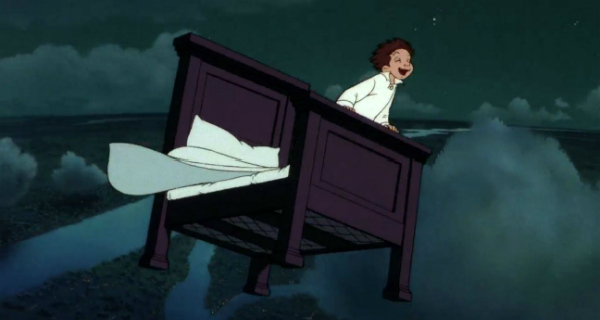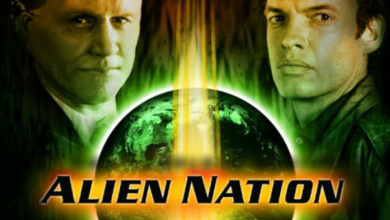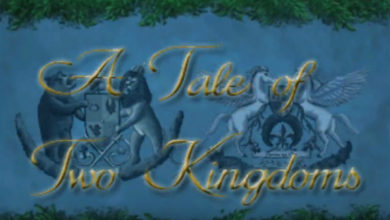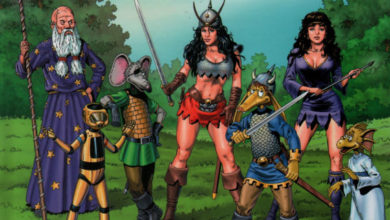Space Oddities – Little Nemo: Adventures in Slumberland

Each month, Raz Greenberg reviews an overlooked piece of science fiction, fantasy or horror – be it a film, a television episode, a comic or a game – one that should have gotten more attention when it first came out and should still be remembered, in his opinion. This month, he reviews an animated film involving some of the biggest names in the animation and film industry – and yet, chances are you haven’t heard of it.
Here’s a film that, by all accounts, should have been remembered, if only for its troubled production history and the endless parade of famous names involved in it. And yet, few people – even in the relevant fandoms – are aware of it. Little Nemo: Adventures in Slumberland is not even remembered as an expansive box-office bomb, which it certainly was. It remains equally forgotten as one of the most charming animated features ever made, which is a shame.
Based on the brilliant early 20th-century newspaper strips by comics and animation pioneer Winsor McCay, Little Nemo: Adventures in Slumberland tells of Nemo, a young boy who is brought to Slumberland, the realm of dreams. After befriending land’s royal princess and discovering its many wonders, Nemo is fooled into opening a door he was warned not to touch, resulting in an apocalyptic threat to both Slumberland and the real world. Can Nemo find the strength within himself to face his own mistake and stop the coming disaster?
The film, which began as a pet-project for the CEO of Japanese animation studio Tokyo Movie Shinsha in the late 1970s, went through a long a troubled pre-production process before actual work on animation began in 1988, a year prior to the film’s release. Among those who contributed to the film’s pre-production are renowned science fiction author Ray Bradbury, up-and-coming screenwriter Chris Columbus (later the director of the first Harry Potter films), a young unknown animator named Brad Bird (later of The Iron Giant and The Incredibles fame) legendary Disney animators Frank Thomas and Ollie Johnston, legendary Looney Toons animator Paul Julian, French comics legend Jean “Moebius” Giraud, famous fantasy artist Brian Froud, Japanese animators Hayao Miyazaki (!)* and the late Isao Takahata and the list goes on.
With such a huge group of talented people, it’s perhaps no surprise that watching Little Nemo: Adventures in Slumberland is pure delight. The fantasy landscapes of Slumberland are breathtakingly beautiful, and the characters that populate it are imaginatively designed and richly animated. The plot gives a true feeling of wandering throughout the land of dreams without alienating its audience by making things overtly surreal, and it is backed with wonderful songs. But the film’s story has deeper layers as well: the film shows how its young protagonist grows up and learns to take responsibility for his actions, through a conflict that involves not only physical challenge, but also psychological difficulties.
When it first came out, critics in both America and Japan failed to see the deeper elements in the film, and bad distribution badly hurt its box-office performance. A common complaint against the film is that it didn’t deliver the spirit of McCay’s original works that were sometimes cruel and ironic. Although the film has its share of darker moments, it is indeed more family-oriented – but it treats its young (and older) audience with respect and sophistication that honor McCay’s vision. In the west, the film also suffered from having Japanese animation fans more focused on action-oriented titles like Akira (also produced by Tokyo Movie Shinsha) and the family audience re-discovering Disney through The Little Mermaid. With so many big names – of both the past and the future – associated with its production, Little Nemo: Adventures in Slumberland is a film that deserves to be rediscovered.
Where to get it: the film’s most recent home-release, a deluxe Blu-Ray edition provides a beautiful viewing experience, and is rich with extras – most notably an incredible pilot film by renowned Japanese animator Yoshifumi Kondo.
* And if you’d like to learn more about Miyazaki, Takahata and their role in the production of Little Nemo: Adventures in Slumberland, among many of their other early works, check out my book Hayao Miyazaki: Exploring the Early Work of Japan’s Greatest Animator, coming out next month!




